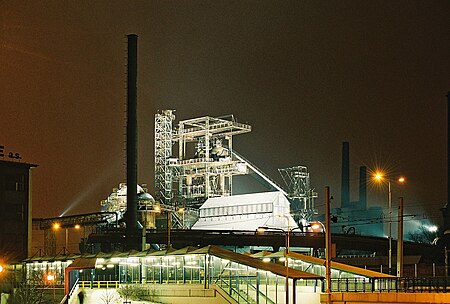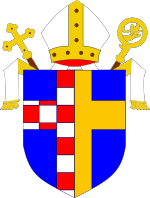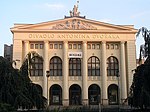Ostrava (Czech: [‘ostrava] ; Polish: Ostrawa, German: Ostrau) is a city in the north-east of the Czech Republic and the capital of the Moravian-Silesian Region. It has about 280,000 inhabitants. It lies 15 km (9 mi) from the border with Poland, at the confluences of four rivers: Oder, Opava, Ostravice and Lučina. Ostrava is the third largest city in the Czech Republic in terms of both population and area, the second largest city in the region of Moravia, and the largest city in the historical land of Czech Silesia. It straddles the border of the two historic provinces of Moravia and Silesia. The wider conurbation – which also includes the towns of Bohumín, Havířov, Karviná, Orlová, Petřvald and Rychvald – is home to about 500,000 people, making it the largest urban area in the Czech Republic apart from the capital Prague.
Ostrava grew in importance due to its position at the heart of a major coalfield, becoming an important industrial engine of the Austrian empire. During the 20th century it was known as the "steel heart" of Czechoslovakia thanks to its status as a coal-mining and metallurgical centre, but since the Velvet Revolution (the fall of communism in 1989) it has undergone radical and far-reaching changes to its economic base. Industries have been thoroughly restructured, and the last coal was mined in the city in 1994. However, remnants of the city's industrial past are visible in the Lower Vítkovice area, a former coal-mining, coke production and ironworks complex in the city centre which retains its historic industrial architecture. Lower Vítkovice has applied for inclusion in the UNESCO World Heritage List.
Ostrava is home to various cultural facilities including theatres and galleries. Various cultural and sporting events take place in Ostrava throughout the year, including the Colours of Ostrava music festival, the Janáček May classical music festival, the Summer Shakespeare Festival and NATO Days. Ostrava is home to two public universities: the Technical University of Ostrava and the University of Ostrava. In 2014 Ostrava was a European City of Sport. The city co-hosted (with Prague) the Ice Hockey World Championships in 2004 and 2015. It will once again host the tournament in 2024.










